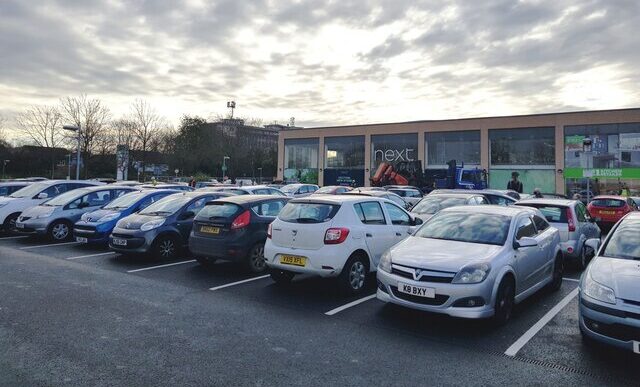What’s in the agreement on incentives for electric and low-emission cars. Facts and comments

The government has reached an agreement on incentives for the purchase of electric and heat-engine (low-emission) cars. Here are numbers, timing and Motus-E's comment
The government has reached an agreement on new incentives for the automotive sector from 2022 to 2024, which will serve to stimulate purchases and, consequently, to favor the turnover of the fleet towards vehicles with lower levels of emissions.
WHAT'S IN THE AGREEMENT
As reported by Repubblica , the agreement consists of 650 million euros per year for three years. Less polluting thermal-engine vehicles are included, but will gradually reduce the availability of funds. On the contrary, over the course of the three years, the money devoted to electric and hybrid cars will increase.
The maximum contribution for electric-only cars has been reduced from € 6,000 to € 5,000.
For thermal engine vehicles that fall within the emission range of 0-20 grams of CO2 per kilometer, there is a bonus of 3,000 euros, which rises to 5,000 with the scrapping of a vehicle of a lower class than Euro VI. The maximum limit is 35,000 euros, excluding VAT.
In the 21-60 g / km range, the incentive is instead of 2000 euros, or 4000 with scrapping, for a maximum of 45,000 euros.
For the 61-135 g / km category, 2000 euros are foreseen but only with scrapping, and a ceiling of 30,000 euros. The resources allocated will decrease from 170 million in 2022 to 150 in 2023 and 120 in 2024.
Finally, for electric motorcycles and those with thermal engines, a maximum of 4000 and 2500 euros respectively are foreseen.
GIOVANNINI'S PROPOSAL REJECTED
Furthermore, the provision was not extended to corporate fleets but only, to a limited extent, to commercial vehicles: the request of the Minister of Infrastructure and Sustainable Mobility, Enrico Giovannini, was rejected.
DISCOUNTED FRANCO
Sales support measures (not only cars, but also two-wheeled vehicles) will not be linked to the definition of interventions to support industrial policies for the transition to electric mobility, writes Repubblica , which will come later. Economy Minister Daniele Franco would have liked the two things to be coupled immediately.
THE GIORGETTI LINE PASSES
In essence, the agreement – reached yesterday following a meeting of the Ministers of Infrastructure, Economy, Economic Development, Ecological Transition and Labor – represents a victory for Giancarlo Giorgetti, the Minister of Economic Development, who asked for a sudden intervention in support of the sector. He accepted that 50 million euros were destined for commercial vehicles and that the maximum contribution for the purchase of electric cars would be cut by a thousand euros.
"It was time", he declared, "finally there are incentives for a sector in great suffering".
HOW ELECTRIC CARS DO IN ITALY
In February, according to data from the MOTUS-E trade association, 8592 electric cars were registered in Italy, including pure battery-powered vehicles (BEVs) and plug-in hybrids (PHEVs). The market share of these vehicles stood at 7.7 percent of the total: more than 5.8 percent recorded in February 2021, but down sharply compared to the 12 percent average of the last quarter of last year.
In March, however, reports Repubblica , the Italian car market could have reported a loss of registrations of more than 25 percent on an annual basis, also due to the delay in incentives.
THE NEXT STEPS
Il Sole 24 Ore explains that the definitive version of the Dpcm will probably be ready for Wednesday, which will share the total 8.7 billion of the fund by 2030 for the automotive sector in the first few years. The decree must pass the examination of the Court of Auditors and be published in the Official Journal; after that, the online platform that allows dealers to book incentives will have to be updated. The trial could end at the end of April.
THE COMMENT OF MOTUS-E
"The new incentives for electric cars, although positive, risk not being fully effective", said Francesco Naso, general secretary of MOTUS-E.
"Based on what we learn from press sources, in fact, the government is granting up to 5,000 euros in incentives for pure electric cars against a maximum cost of 35,000 euros, while up to 4,000 euros for plug-in hybrid cars to against a maximum cost of 45,000 euros. This is inconsistent with the promptness of the technological developments at stake and with the policies on charging infrastructures put in place so far: in fact, on the one hand the state will finance high-power charging infrastructures with 740 million euros, on the other it will incentivize cars that they do not charge at high power. Coherence between the measures would be needed ”.
"Furthermore", continues Naso, "the fact that the incentives do not extend to corporate fleets represents a lost opportunity", because these "can be a means of real diffusion of battery-powered vehicles, bringing to the second-hand market, within three to four years, electric vehicles that can also be purchased by families who cannot afford a new vehicle ”.
“The real risk is that the Ecobonus is not entirely effective and that the resources made available are not fully utilized”, he concluded.
This is a machine translation from Italian language of a post published on Start Magazine at the URL https://www.startmag.it/smartcity/incentivi-auto-elettriche-motore-termico/ on Fri, 01 Apr 2022 13:18:53 +0000.
